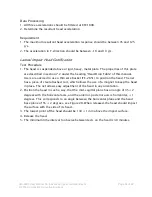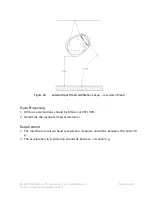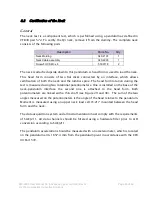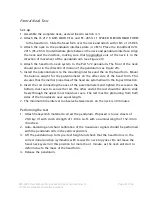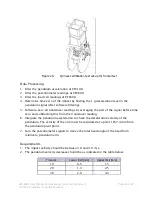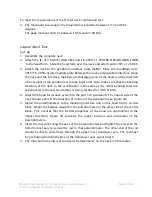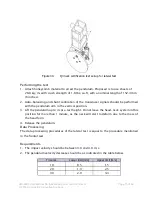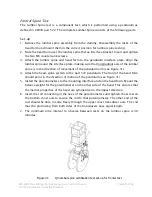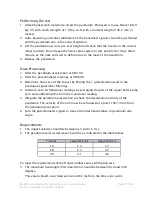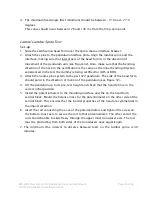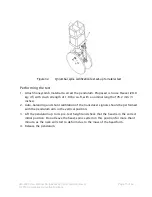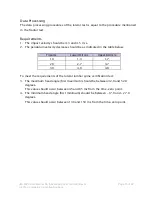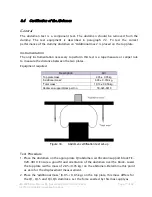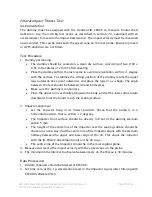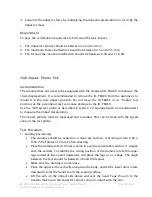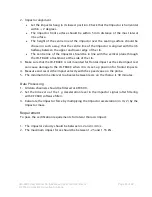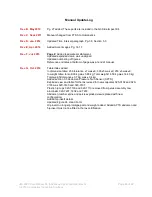
020-9905 User Manual Q3 (Advanced 3 year old child) Rev G Page 78 of 82
© 2016 Humanetics Innovative Solutions
indicated in Figure 33. This must be done within 10 seconds after placing the initial
load.
3.
Let the top plate compress the abdomen for a period of 2 minutes (± 10 sec.).
4.
Read the displacement measurement.
5.
Remove the mass and top plate.
6.
Observe an interval of at least 30 minutes between successive tests on the same
abdomen.
Data Processing
1.
Subtract the final reading from the initial reading
Requirement
The deformation of the abdomen should be between 13 and 17 mm.
8.5 Certification of the Thorax
General
A complete standard Q3 dummy must be used in this test accept for the abdomen APTS
sensors and hip insert which must not be fitted. The APTS abdomen can be fitted but
must not have the pressure bladders, it must have the foam insert cylinders used for
certification. The dummy is to be tested with the suit. Prior to the test, the dummy should
be inspected for possible damage. It is particularly important for the thorax tests to check
the condition of the rib cage, the shoulder spine interface and the clavicle. No cracks or
tears are allowed. Also check that all screws have been tightened properly.
As the performance of several components will affect this full body thorax impact test,
make sure that this test is performed as the last test in the certification procedure, where
all dummy parts have passed their applicable certifications tests successfully.
The data acquisition system and all instrumentation must comply with the requirements
of SAE J211, version March 1995. All data channels should be filtered using a hardware
filter prior to A/D conversion according to SAE J211, version March 1995.

